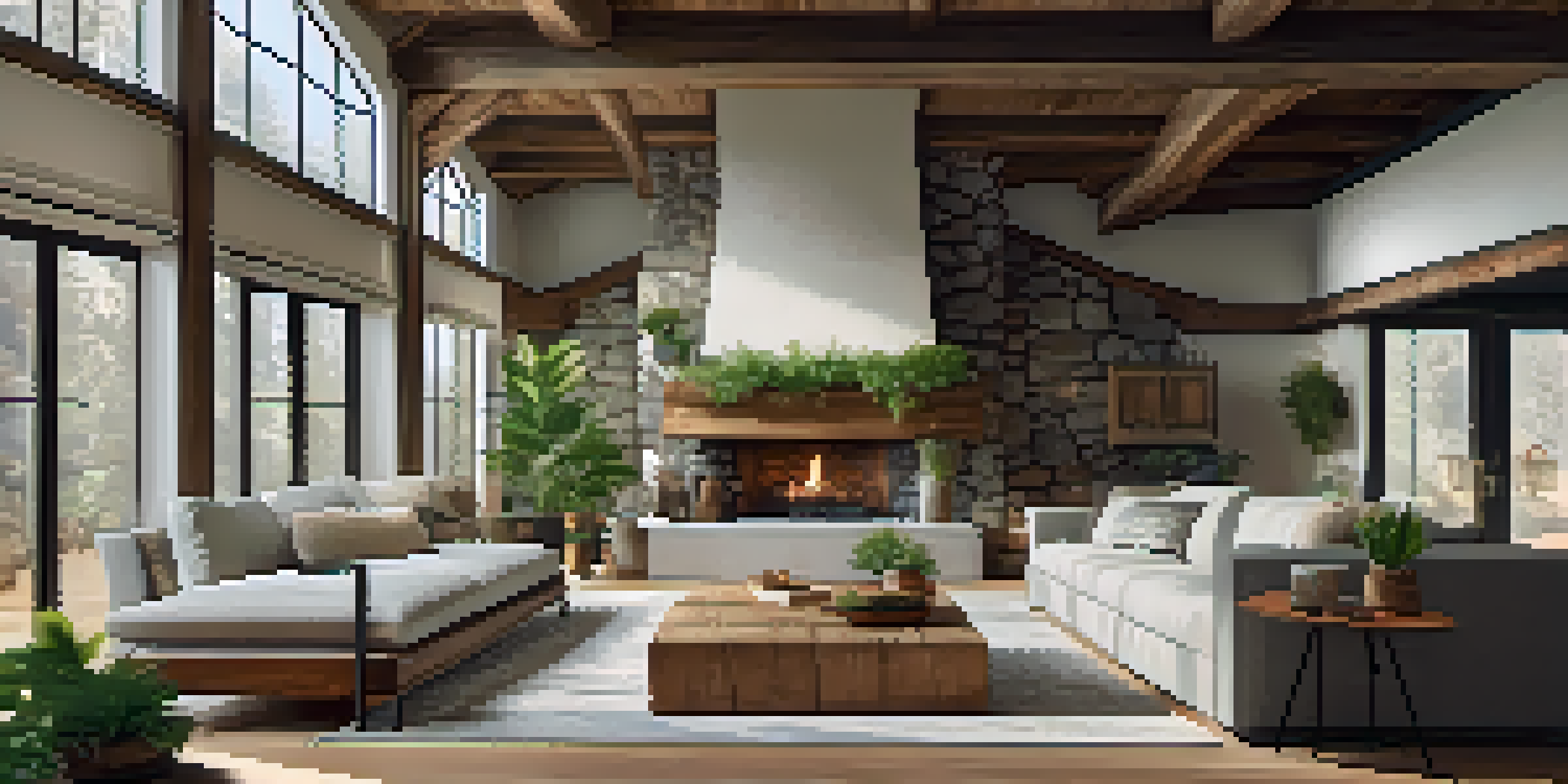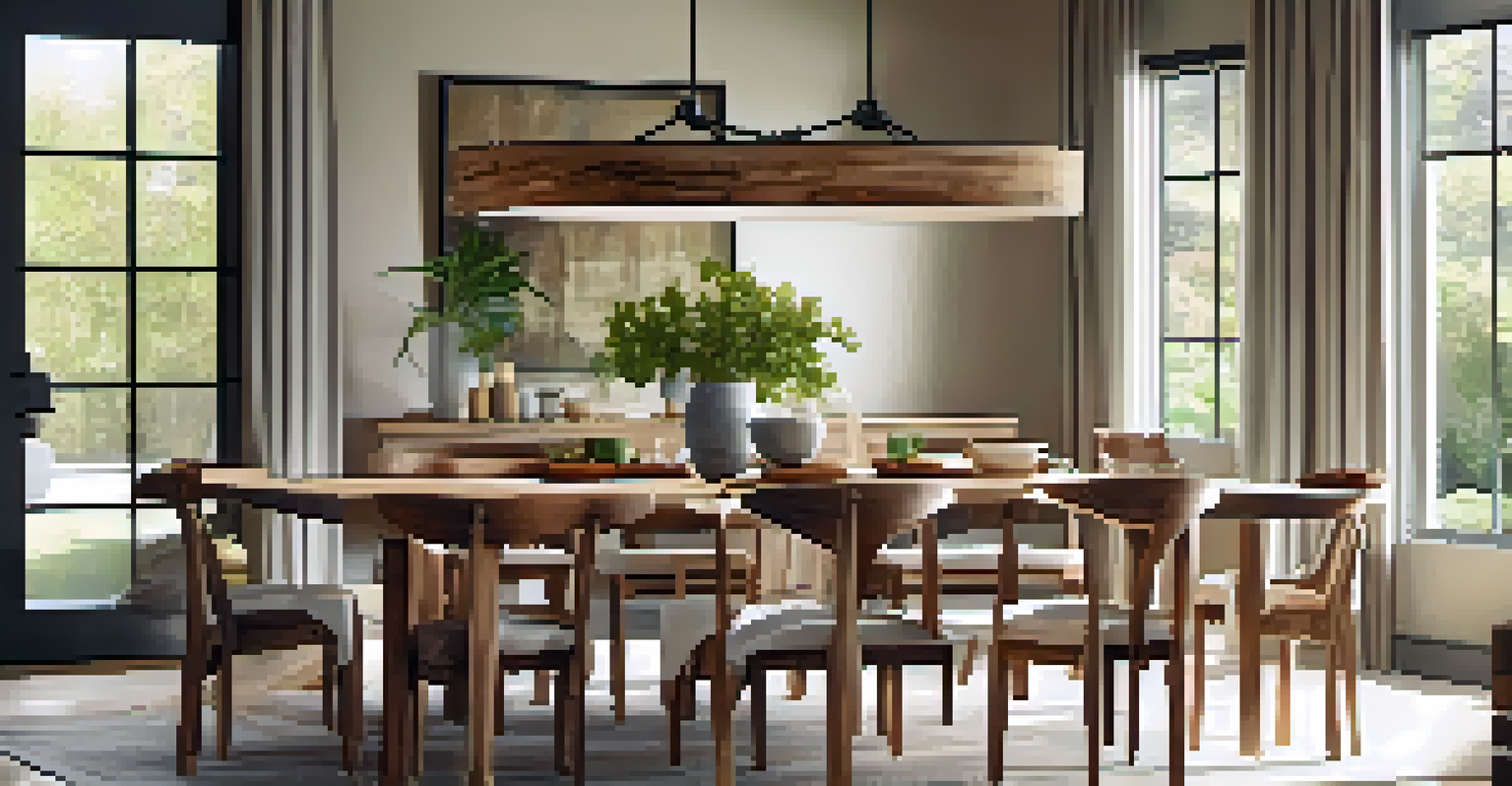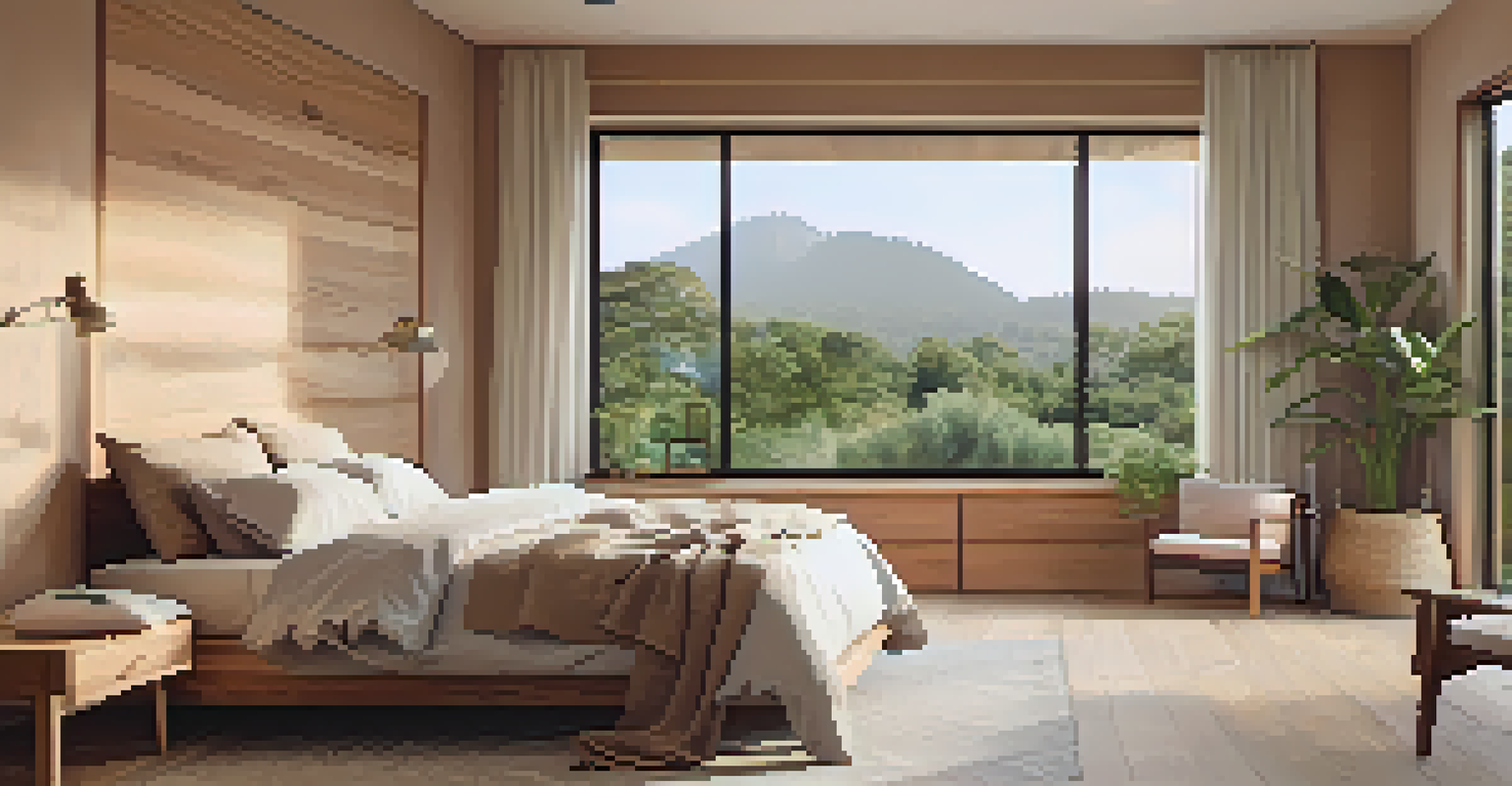The Benefits of Using Natural Materials in Home Design

Enhancing Aesthetics with Natural Materials
Natural materials like wood, stone, and clay bring an organic beauty to home design. Their unique textures and colors create a warm, inviting atmosphere that artificial materials often lack. For instance, a wooden beam or a stone fireplace can serve as a focal point in any room, adding character and charm.
The best way to predict the future is to create it.
Moreover, these materials age gracefully, developing a patina that tells a story over time. Unlike synthetic options, which can look dated, natural materials maintain their appeal, often becoming even more beautiful as they weather. This timeless quality makes them a favorite among homeowners and designers alike.
Additionally, the use of natural materials can evoke a sense of connection to the environment. When you bring elements from nature indoors, like a reclaimed wood table or slate flooring, it fosters an appreciation for the natural world, enhancing your living experience.
Sustainability and Eco-Friendliness
One of the standout benefits of using natural materials is their sustainability. Many natural options are renewable and biodegradable, making them a more eco-friendly choice compared to their synthetic counterparts. For example, bamboo grows rapidly and can be harvested without harming the plant, making it an excellent flooring option.

In contrast, materials like plastic or laminate can take hundreds of years to decompose, contributing to landfill waste. By opting for natural materials, you're not just enhancing your home; you're also making a positive impact on the environment. This choice aligns with the growing trend of sustainable living, where homeowners prioritize eco-conscious decisions.
Natural Materials Enhance Aesthetics
Using materials like wood and stone creates an inviting atmosphere and adds character to home design.
Furthermore, many natural materials are sourced locally, reducing transportation emissions and supporting local economies. This creates a ripple effect, encouraging more sustainable practices in the community and fostering a stronger connection between people and their environment.
Health Benefits of Natural Materials
Choosing natural materials can significantly improve indoor air quality, which is crucial for your health. Unlike synthetic materials that can emit volatile organic compounds (VOCs), natural options like wood and stone are free from harmful chemicals. This means you can breathe easier, especially for those with allergies or respiratory issues.
Nature does not hurry, yet everything is accomplished.
Additionally, many natural materials have properties that promote well-being. For instance, clay and lime can regulate humidity levels, helping to keep your home comfortable year-round. This natural humidity control can prevent the growth of mold and dust mites, which are common allergens.
Moreover, the aesthetic appeal of natural materials can positively affect your mental health. Studies show that environments rich in natural elements can reduce stress and enhance mood. So, surrounding yourself with natural materials isn't just good for your body; it's good for your mind, too.
Durability and Longevity of Natural Materials
Natural materials are known for their durability, often outlasting synthetic alternatives. For example, hardwood floors can withstand heavy foot traffic for decades when properly cared for, while carpets may need frequent replacement. Investing in natural materials means you're choosing quality that stands the test of time.
In addition to being long-lasting, many natural materials improve with age. A wooden table can develop a unique character as it ages, enhancing its beauty and value. This is a stark contrast to synthetic materials, which may fade or become damaged over time.
Sustainable and Eco-Friendly Choice
Natural materials are renewable and biodegradable, making them a better environmental choice compared to synthetic options.
Furthermore, the durability of natural materials can lead to lower maintenance costs in the long run. While they may require some upkeep, the longevity they offer often outweighs the initial investment, making them a wise choice for budget-conscious homeowners.
Versatility in Design with Natural Materials
Natural materials are incredibly versatile, fitting seamlessly into various design styles. Whether you're going for a rustic farmhouse vibe or a sleek modern look, materials like stone, wood, and metal can adapt to your vision. For instance, reclaimed wood can add warmth to a contemporary space while providing a touch of history.
Moreover, the palette of natural materials is rich and diverse, allowing for endless combinations. From the earthy tones of clay tiles to the cool hues of marble, these materials can create stunning contrasts and harmonies within your home. This flexibility gives homeowners the freedom to express their unique style.
Additionally, as trends shift, natural materials remain relevant. Unlike fads that come and go, the beauty and appeal of natural elements endure, making them a wise investment for your home's aesthetic.
Cost-Effectiveness of Natural Materials
While the upfront cost of natural materials can sometimes be higher, their long-term cost-effectiveness is undeniable. Because they are durable and require less frequent replacement, you’ll save money over time. For instance, investing in quality hardwood flooring may seem steep initially, but it can last for generations.
Moreover, using natural materials can reduce maintenance costs. Many require less upkeep than synthetic options, which can save you money on repairs and replacements down the line. This financial benefit makes natural materials a smart choice for budget-conscious homeowners.
Health Benefits of Natural Materials
Natural materials improve indoor air quality and promote well-being, making your living space healthier and more comfortable.
Additionally, the timeless appeal of natural materials can enhance the resale value of your home. Buyers are often willing to pay a premium for homes featuring high-quality natural materials, making your investment pay off when it’s time to sell.
Creating a Connection to Nature
Incorporating natural materials in home design fosters a deeper connection to the outdoors. The textures and colors of materials like wood and stone can evoke feelings of tranquility and grounding, creating a peaceful sanctuary within your home. This connection can be especially beneficial in urban environments, where nature may feel distant.
Moreover, designing with natural materials encourages mindfulness and appreciation for the environment. When you choose materials sourced from nature, you become more aware of your surroundings and the impact of your choices. This conscious approach can lead to a more harmonious living space.

Additionally, natural materials can inspire a more sustainable lifestyle. They serve as a reminder of the beauty of the natural world, encouraging homeowners to adopt eco-friendly practices both inside and outside the home. This creates a holistic approach to living that nurtures both personal well-being and the planet.
Conclusion: The Lasting Impact of Natural Materials
In conclusion, the benefits of using natural materials in home design are extensive and far-reaching. From enhancing aesthetics and sustainability to promoting health and well-being, these materials offer a wealth of advantages that can transform your living space. As we continue to prioritize eco-conscious choices, natural materials stand as a beacon of hope for both our homes and the environment.
By choosing natural materials, you're not just making a design choice; you're making a lifestyle decision that reflects your values. Whether it's the durability of hardwood, the beauty of stone, or the warmth of clay, each choice contributes to a more sustainable and healthy home.
Ultimately, embracing natural materials allows you to create a space that resonates with authenticity and timeless beauty. As you embark on your home design journey, consider the lasting impact of these materials, and let nature inspire your creativity.